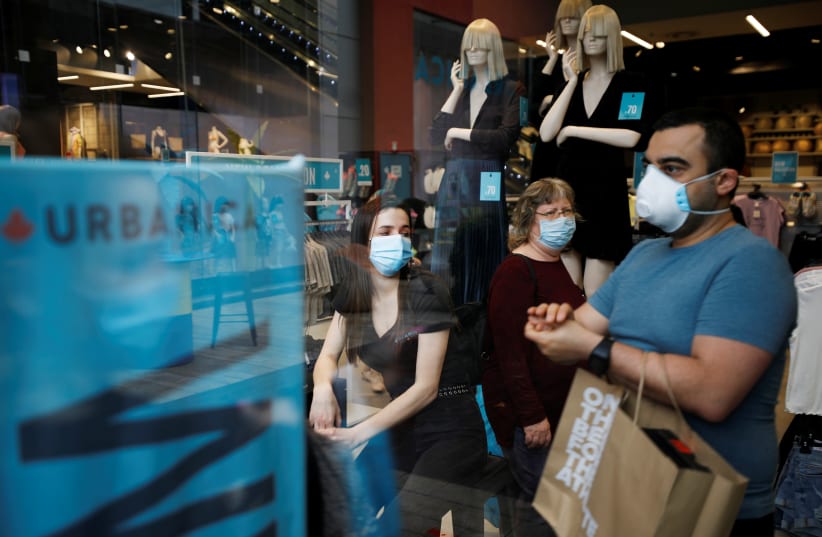Need new winter boots? A trendy raincoat? Israelis in need of some winter fashion tend to look to the country’s large indoor malls. But since the start of the Rosh Hashanah lockdown, shopping centers have been closed.
But by Black Friday, some Israelis will be able to splurge once more.
Beginning Friday morning, according to the Finance Ministry, the country will launch a pilot program at 15 malls across the country that will run until December 6. Pending its success, shopping centers could open just in time for Hanukkah, which begins on December 10.
The malls that will participate in the pilot are being chosen by the Finance and Economy ministries. So far, they have said that the Kiryon mall in Kiryat Bialik, the Petah Tikva Grand Mall, Grand Canyon Shopping Mall in Beersheba, Azrieli Haifa, Ayalon Mall and Malcha Mall in Jerusalem will open. Another nine malls are expected to be selected before Friday: three in the North, three in Center and three in Jerusalem or Southern Israel.If a mall is not on the list, it cannot open. No malls in red areas are being considered.
If you do live in a precinct where one of these malls will operate and you want to feed your shopping addiction, here is what you can expect, according to a five-page outline signed by Health Ministry deputy director-general Itamar Grotto:
The number of people in each mall and every store inside it will be determined by square meters: one person for every seven square meters and up to 10 people. The Health Ministry differentiated between “essential” and nonessential stores. Essential stores, such as pharmacies and home repair shops, will be allowed to have many more customers.
The number of visitors to the mall will be measured digitally and reported online, including providing alerts to a control room, mall management and the entry guards, letting them know how many people are in the facility.
Once the mall hits 90% capacity of the eligible number of shoppers, guards will begin to inform visitors and to regulate the number of entries. If the mall hits capacity, entry will stop entirely until some shoppers leave.
The mall will also publish for the public how many people are there and whether it is advisable to visit at a particular time.
Mall monitors will patrol the facilities and remind people to follow the rules. When they see people break the rules, they will record the violation.
The data – number of violations and type of violations – will be turned over to the Finance, Economy and Health ministries to determine the success of the pilot. Each mall will be responsible for submitting a daily report.
Signage will be hung prominently throughout the malls, including at each mall and store entrance, delineating how to behave in the mall.
To help ensure the success of the program, employees of the malls as well as stores within the malls will receive training on how to follow the rules.
The standard and obvious rules will, of course, need to be followed, such as wearing masks and social distancing.
In addition, eating will be forbidden in the facility, and areas meant for eating will be blocked off with physical barriers to ensure shoppers do not try to break the rules.
Moreover, care will be taken to ensure proper hygiene, from disinfecting obvious surfaces like store counters, to wiping down handles, doors, railings and even elevator buttons and switches. Garbage cans will be emptied frequently, and hand sanitizer, hot water and soap will be readily available for all shoppers.
The Health Ministry is considering operating the malls outside of their usual hours to allow higher-risk customers to shop when there is less chance of catching coronavirus. In addition, shopping during “dead hours” will be encouraged, to help shoppers maintain distance from one another.
A similar outline is expected to be released for marketplaces in the coming days.
And if it all works?
If the metrics are good, wrote Grotto, malls across the country could open up – subject to the rate of infection, of course.
